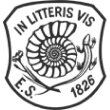Industrial Crops and Products, volume 122, pages 308-315
The essential oil from industrial hemp (Cannabis sativa L.) by-products as an effective tool for insect pest management in organic crops
GIOVANNI BENELLI
1, 2
,
Roman Pavela
3
,
L. Cappellacci
3
,
Giuseppe Santini
3
,
Dennis Fiorini
4
,
Stefania Sut
5
,
A FATA
5
,
Angelo Canale
6
,
P. R. Venskutonis
3
Publication type: Journal Article
Publication date: 2018-10-01
Journal:
Industrial Crops and Products
scimago Q1
wos Q1
SJR: 0.907
CiteScore: 9.5
Impact factor: 5.6
ISSN: 09266690, 1872633X
Agronomy and Crop Science
Abstract
The inflorescences of industrial hemp (Cannabis sativa L.) represent a consistent by-product that is underutilized. Moving from the concept that this plant part has evolved as a natural weapon against phytophagous insects, secreting important secondary metabolites such as cannabinoids and volatile terpenes, herein we assayed the potential of its essential oil as a botanical insecticide. For the purpose, the essential oil was obtained by fresh inflorescences of hemp (monoecious cv. Felina 32) by steam-distillation and analysed by gas chromatography (GC-FID) and gas chromatography-mass spectrometry (GC–MS). The oil was tested against the filariasis vector Culex quinquefasciatus, the peach-potato aphid Myzus persicae, the housefly Musca domestica and the tobacco cutworm Spodoptera littoralis. To prove its harmlessness on non-target invertebrates, it was tested on the multicolored Asian lady beetle, Harmonia axyridis, and Eisenia fetida earthworms, and compared with α-cypermethrin as the positive control. The essential oil composition was dominated by monoterpene and sesquiterpene hydrocarbons, with (E)-caryophyllene (45.4%), myrcene (25.0%) and α-pinene (17.9%) as the most abundant compounds. Results from insecticidal tests showed that the essential oil from inflorescences of industrial hemp cv Felina 32 was highly toxic to M. persicae aphids (LC50 of 3.5 mL L−1) and M. domestica flies (43.3 μg adult−1), while toxicity was moderate towards S. littoralis larvae (152.3 μg larva−1), and scarce against C. quinquefasciatus larvae (LC50 of 252.5 mL L−1) and adults (LC50 > 500 μg cm−2). Contrary to α-cypermethrin, the hemp cv Felina 32 essential oil was not toxic to non-target invertebrate species, including 3rd instar larvae and adults of H. axyridis ladybugs and adults of E. fetida earthworms. Taken together our results shed light on the possible utilization of the crop residue of industrial hemp as a source of environmental-friendly botanical insecticides to be used in Integrated Pest Management and organic agriculture, particularly to manage aphid and housefly populations.
Nothing found, try to update filter.
Are you a researcher?
Create a profile to get free access to personal recommendations for colleagues and new articles.

























